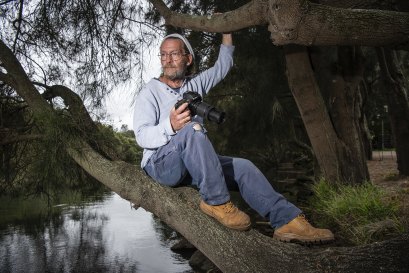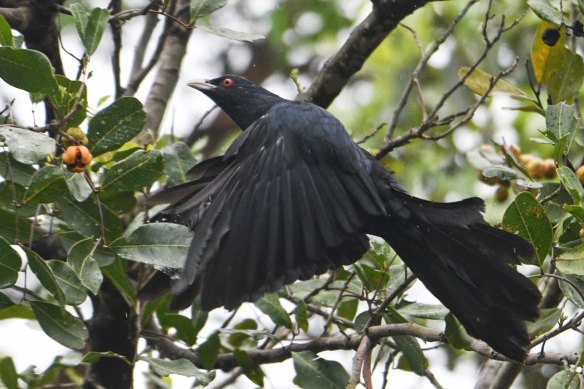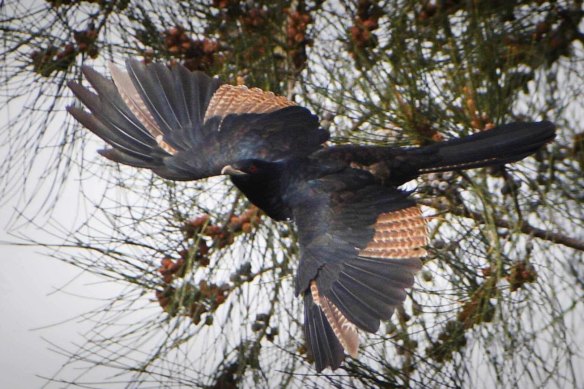
The common traits of these birds that made them well adapted to city life were they tended to be larger and “a bit snarky and aggressive”, with a flexible diet and the ability to live in both tall trees and heavy nectar-rich shrubs such as grevilleas and bottlebrush, Parsons said.
The Australian Museum says another reason for the proliferation of koels in urban areas could be more ornamental plants and weeds that produce berries.

Michael Crawley, of Dulwich Hill, is a keen birdwatcher who loves the eastern koel, a species of cuckoo that is increasing in prevalence and range in eastern Australia.Credit: Steven Siewert
The koel is divisive because of its call. The Australian Museum describes the female’s call as a repetitive “keek-keek-keek-keek”. The male’s call is a “loud ascending whistle or ‘koo-el’, monotonously repeated … often throughout the day and well into the night”.
Parsons said it was a mating call, but pointed out the birds could mate several times in a season.
Koels are a frequent topic of conversation on social media. It’s been labelled “Sydney’s most obnoxious bird”, “that demonic koel bird”, and “one noisy bastard”, while others say they love the sound because it reminds them of warm weather and Christmas.

An adult male eastern koel that could be heard constantly on Michael Crawley’s street in Dulwich Hill.Credit: Michael Crawley
Every year on Facebook, Briony Sheather posts multiple times in her neighbourhood group about what she calls her “koel rage”. She normally lives in Erskineville in Sydney, but is currently on holiday in “koel-free Europe” – and dreading her return at the end of the month.
“When the koel goes 24/7, it’s exhausting,” Sheather told this masthead.
But her neighbour, environmental podcaster Gretchen Miller, says: “I love them so much! So haunting. Reassuring that some things still live their lives despite human disruption.”
Dulwich Hill resident Michael Crawley is firmly in Team Koel. A few years ago, he was on his balcony when a bird flew off a rooftop straight towards him at eye level, and he was awestruck by its beauty. He later learnt it was a female koel.

A juvenile male koel almost into full adult plumage with only a few immature feathers left on its wings and tail. Credit: Michael Crawley
“When it turned, it caught the sun and I have never seen a firework like it on Sydney Harbour,” Crawley said. “A female koel that catches the sun is absolute magic. I remember seeing it … and it just seemed like a miracle. I knew straight away I’d never be the same again – the bird completely changed my life.”
Until that moment, Crawley had been fond of birds and thinking about joining a bird survey. From that day on, he has been a keen bird enthusiast.
Loading
Crawley said he sympathised with people who could not get to sleep at night or were woken early, but he sympathised with the koel even more. He would never share how to move on a koel because if everyone did that, the birds would be left with nowhere to live.
Parsons said koels were native birds and protected, which meant no one was allowed to hurt them or chase them away.
Get to the heart of what’s happening with climate change and the environment. Sign up for our fortnightly Environment newsletter.









 Add Category
Add Category